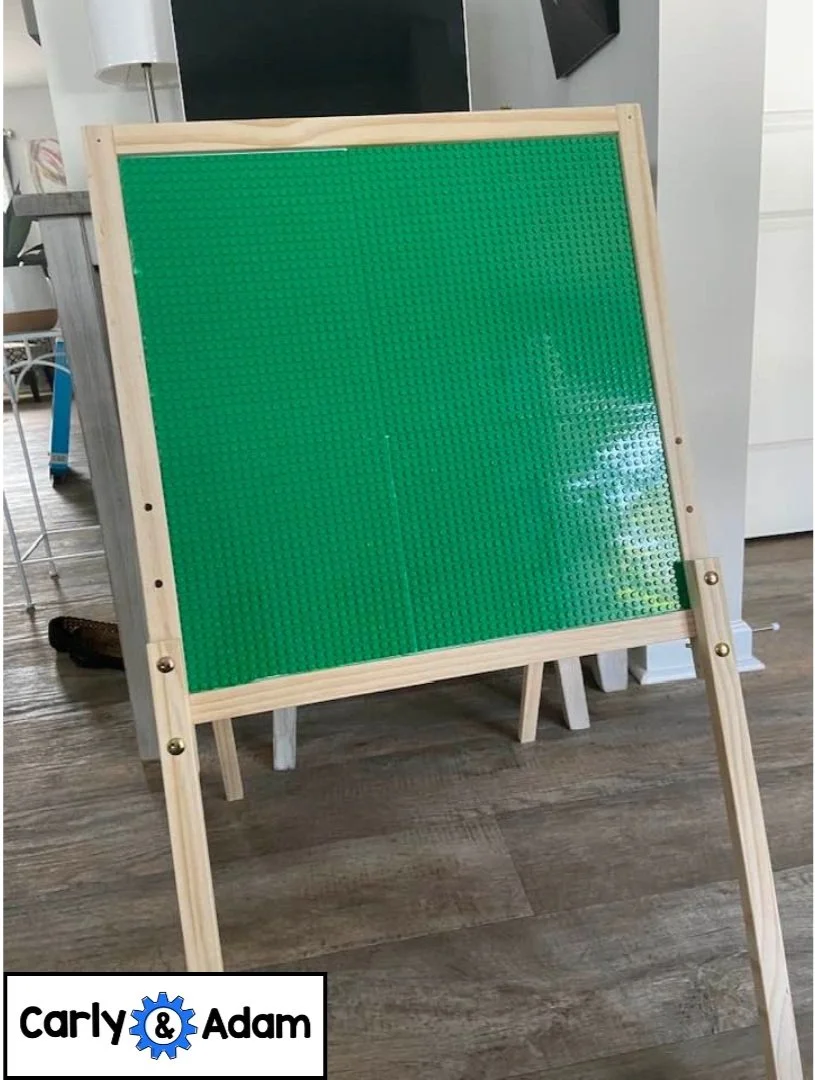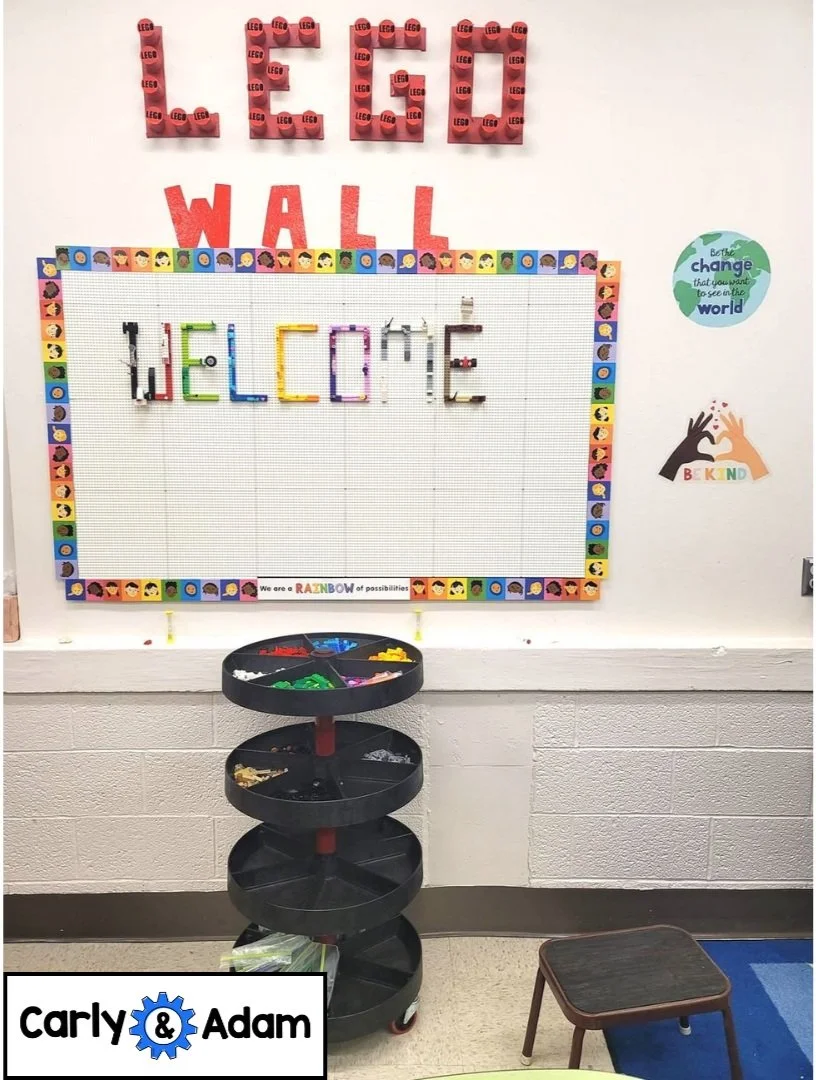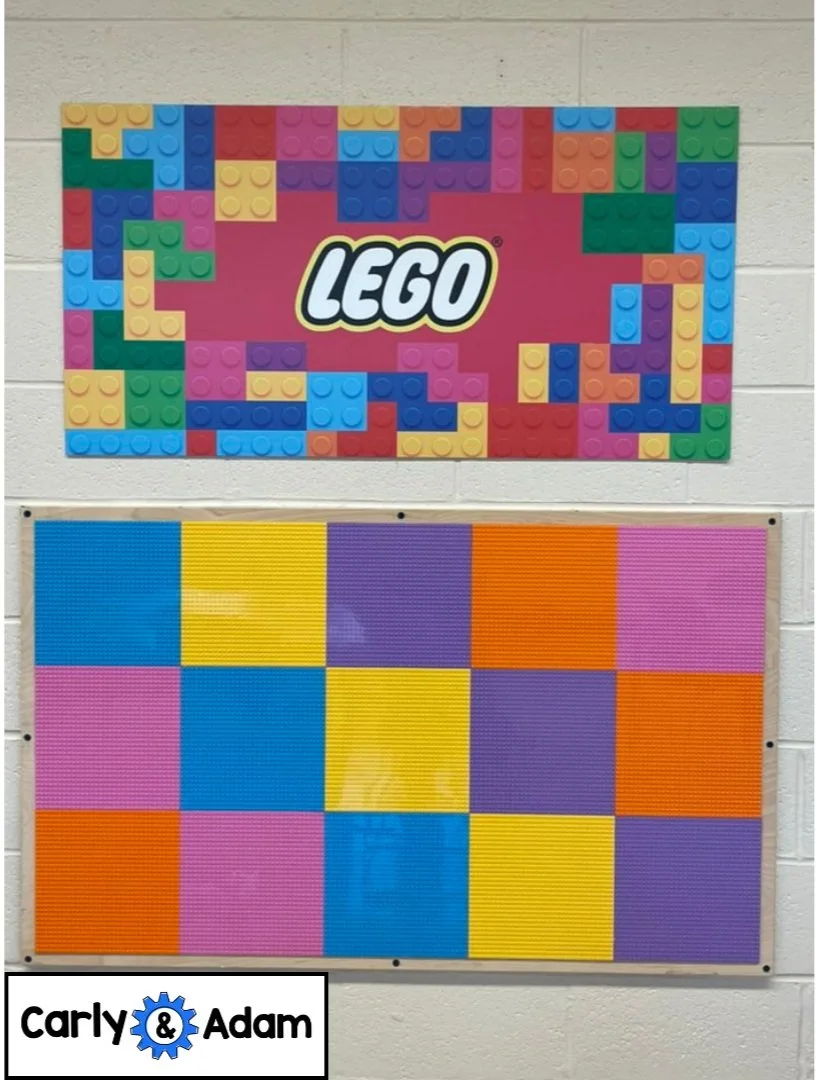Lego Wall Classroom Management Tips and Tricks
The following is a guest post from Dr. Jacie Maslyk.
So, you’ve decided to add a Lego wall to your classroom. Now what?
This addition will surely be exciting for students, but you will want to ensure that specific procedures are in place. Just like with all other aspects of your STEM classroom, you will need to establish rules and routines for this hands-on tool.
Use the question words as a framework to get started:
Who?
When?
How?
Why?
What?
These questions will help to guide you through the development and implementation of classroom procedures. Use the questions to engage your students in the use of Lego walls in the classroom.
Photo Credit: Terry Phillips
Tip: If you don’t have space in your classroom for a Lego wall, cover an easel with Lego base plates for a portable/storable version.
Who?
Part of your classroom routines should include expectations for who can use the Lego space. (Maybe yours isn’t a wall, but instead a table or other surface.) Not to say that only certain students will be able to use it, but instead how many students will be able to access the space?
Photo Credit: @beekks1 on Twitter
If it is a smaller space (like the side of a cabinet or a corner in the room), then perhaps it is only appropriate for 1 to 2 students to work there at a time. If you are lucky enough to have a larger space (a full size bulletin board or long tabletop), you may allow small groups of students (maybe 4-5 or more) to create and build at the same time. Will you have teams who will work on a building project together or will individual students build and explore on their own? These are all things to consider prior to student use.
Photo Credit: Alma Torrez
When?
With the addition of a Lego wall in your space, an increase in student excitement will come along with it. Students will probably want to use the wall all the time! It will be important to set up parameters for the times of day when students are able to use the wall.
Think about the wall in the same way you might plan for a learning center or station, assigning students during different days or times in a more structured manner. Instead, you might want the space to be used more flexibly and encourage students to use it during “free time“, after morning work, or during inside recess time. When students can access it is completely up to you. Just make sure that the expectations are clear.
Photo Credit: Jillian Currie
How?
Some students may have Legos or other building materials at home, but some may not. You will need to explain to students your expectations for how students will use this material, just the way you would for the classroom management of any other type of classroom material.
Students will need to understand how to access, organize, and clean up the Lego space. They will need to know how to put things together and how to take them apart. Including storage bins or other organizational tools right next to your Lego wall will help with easy access to bricks as well as a quick and easy cleanup.
Photo Credit: Celia Huerta
Why?
What are the reasons why students will be utilizing the Lego while in your classroom? Is it simply an opportunity for learners to collaborate and engage in hands-on exploration and interactive play? Perhaps the Lego wall will serve a specific purpose, as students are brainstorming or planning for a project. Maybe the wall can be used in connection with a story, with students building the setting of a story or creating an important scene from a story or drama.
You will likely need to clarify with students the purpose of the Lego wall, as it may serve different purposes at different times. For example, today we are going to use the Lego wall for free play. Students can build whatever they like, as long as it is school appropriate. On other days you may have a more focused assignment or expectation when students are visiting the wall.
Photo Credit: Brittney Victoria
What?
What the students are building on the wall may differ from day today or week to week. Students may work on simple builds that can be created and broken down in one sitting or they may work on a more long-term project that requires additions to the build over some period of time. CHeck out these creative ways to use Lego in the classroom.
Lego bricks (or other tools for construction) can be used in different subjects. In art, students can create patterns and explore colors. In math, the bricks can be used to create addition and subtraction problems, construct bar graphs, or create multiplication arrays. In literacy, vocabulary words or simple decodable words can be written on the bricks to practice building words and sentences. Lego creations can be used to prompt writing and engage students in discussions about stories that have been read in class.
Photo Credit: Rebecca Clouthier
Other Tips
Anchor charts or other visuals (rules, schedule, project ideas) can be posted in the classroom so that students are reminded of the who, when, what, how, and why. The discussion and development of anchor charts should be done alongside the students. Build these together so that students feel ownership over the Lego wall and the way it is used in the classroom. The charts can be referred to throughout the year.
Keep a stack of sticky notes and writing utensils nearby. Connect the opportunity to build with the chance to infuse some writing.
Jot down a title for what you’ve built.
Write a sentence to describe your build.
Write the vocabulary word that your build is demonstrating.
Write a word problem that could be solved by looking at your bricks.
If classroom devices are available, one could be kept by the wall to encourage students to take a picture of what they created. It is likely that the Lego wall will change frequently with the addition of other students' input, so grabbing a picture of their work will quickly capture their creativity.
Incorporating the Lego wall into your classroom will open up the imaginations of your students and get them thinking creatively. Find opportunities for a mix of free play and content connected brick building. The possibilities for student creation are endless!
Have more questions or need additional resources?
Download our Free STEM challenges from our Free STEM Resource Library.
Join our Free Facebook Group.
For more STEM ideas, inspiration, and collaboration with other STEM teachers be sure to join our FREE Facebook group Elementary STEM Teachers with Carly and Adam!
We hope you have found this blog post helpful. To stay connected with Carly and Adam's teaching tips and classroom freebies be sure to follow us on Facebook, Pinterest, Teachers Pay Teachers, and subscribe to our blog!
An educator for the last 23 years, Dr. Jacie Maslyk, has served as a classroom teacher, reading specialist, elementary principal, and assistant superintendent. She is the author of STEAM Makers: Fostering Creativity and Innovation in the Elementary Classroom, Connect to Lead: Power Up Your Learning Network to Move Your School Forward (ISTE), Remaking Literacy: Innovative Instructional Strategies for Maker Learning and Unlock Creativity: Opening a World of Imagination With Your Students. You can read more on her blog, Creativity in the Making, at www.jaciemaslyk.blogspot.com. Connect with Jacie on Twitter @DrJacieMaslyk or email her at jaciemaslyk@gmail.com .









